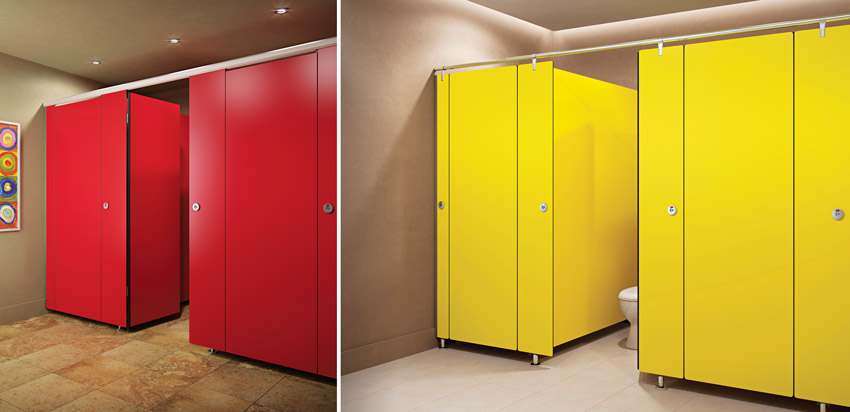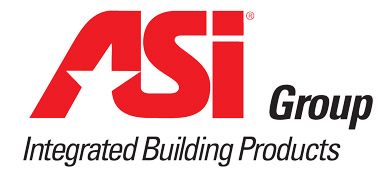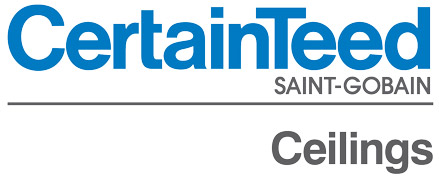The Evolving Workplace Environment
Technology and Mobility
One of the more dramatic changes in the way knowledge workers spend their time comes from the advancements in computer technology. Before the 1990s, virtually all organizations relied on paper documentation and filing systems coupled with physical communication systems, such as U.S. mail and telephone calls. Today, virtually all organizations rely on computerized work processes that link people instantly to electronic documentation and communications. One of the results of this improved technology is the ability for workers to be more mobile, meaning they can be quite engaged and productive outside of the office. Connecting electronically from remote locations allows those jobs that require face-to-face contact with people outside of the organization to be highly productive wherever they are. It also means that employers can be flexible about allowing employees to work from home or other locations.
With people spending less time in the office, though, it begs the question of why dedicate so much real estate space for them? The GSA has developed a white paper titled “Leveraging Mobility, Managing Place,” which summarizes some research on finding the right balance between mobile, electronically connected workers and a centralized work building.1 It indicate that creating a mobile workforce has benefits for the organization and the people but also has implications for the design of workspaces. Specifically, it finds that since people don’t require formal, full-time workspaces, mobility can actually support higher space utilization through shared arrangements or other means. It also finds that it is good for the natural environment by reducing the carbon footprint of the workforce in many cases. Looking toward the emerging design trend, the GSA sees it creating denser workstation areas, more varied space types, and reduced real estate as the percentage of mobile workers increases. A separate study by CoreNet Global reported that between 2010 and 2012, the average workplace dropped from 225 square feet per person to 176 square feet. It predicts that this may drop to as low as 100 square feet for many facilities in 2017.
Another aspect of computer technology is the ability to work asynchronously, meaning teams can communicate or work together not only in different places but also at different times. In a GSA publication titled Workplace Matters, data provided by the Gartner Group leads it to indicate that “working with others while in different times and different places will become the dominant work style of the future, replacing noninteractive work, which was the dominant workstyle of the past.” Commonly, it used to be routinely assumed that physical meetings where everyone was in the same place at the same time was the only way to collaborate. With the increasingly available computerized communication technology, meeting at the same time but in different places has become quite routine using video conferencing, audio teleconferences, or similar means. Further, since most types of electronic communication can be filed and accessed after the fact, asynchronous meetings and communications are also very common. Sending emails or creating online shared documents that are read and responded to later are simple versions of this. Recorded meetings are another version, where webcasts or podcasts can be retrieved to allow people to collaborate by gaining the knowledge of the meeting and then responding on their own schedule to interact with the rest of the group. Everyone showing up at the same place and same time is no longer required for full engagement and productivity.
What does this technological mobility and connectivity mean for design? As the workplace evolves, one constant remains: the need for power and data connections to supply our desktop and mobile devices in all of those different places and times. Even in a wireless world, mobile devices still need power and a data connection. Such power and data connections accommodate the flexibility of time and location of workers by enabling the connectivity that is required to function in the digital landscape. This could take the form of standard 120-V outlets or USB ports, or even a wired Internet connection. Most significantly, this convenience is no longer only true of offices but also at home, in hotels, retail locations, airports, and all of the other places that mobile workers can use to connect, be productive, and remain fully engaged. Designers are being asked to include such ports not only in walls at these locations but also into built-in and even movable furniture.
Recognizing this trend, clever and convenient power grommet solutions have been developed by manufacturers that are specifically intended to be integrated into furniture to help create new working environments. An extensive array of such power grommets for the modern workspace has become available and can be readily selected and specified. Because they are typically complete and UL listed, just like electrical outlets, they can be easily incorporated in a code-compliant and durable manner. Such power grommets have been used in diverse locations ranging from community workstations and shared workspaces to nontraditional workspaces like hotel lobbies and bedside nightstands. Power grommets can be hardwired by an electrician or they can be made with a standard plug that can be inserted into a wall outlet. They also come in a variety of forms, including flip-ups, pop-ups, recessed, and edge mount versions, lending their mixed use versatility to any application.
A complementary but often necessary component to creating this connectivity is wire management. Wires and cables are best handled in channels or hardware that keep them safely run along the back edge of a work surface or some similar out-of-the-way place. This keeps things working smoothly and helps eliminate the potential of unsightly conditions. It also helps avoid accidental snags or pullouts of the wire or plugs in receptacles. Wire managers are available that include products for floors, under desks, behind desks, and a variety of clips, straps, and loops to help channel cables neatly and out of sight.
Manufacturers of power grommets and wire management systems have seen and responded to the changes in the working environment, even helping to move them forward in some cases. Incorporating power, data, and wiring in mobile work locations ultimately has the capability to turn any space into a potential workspace and takes emphasis away from the traditional work desk. Since power can sometimes be in short supply in nontraditional workspaces, the addition of such features helps more people work remotely and be mobile. Billy Peele, marketing manager at Doug Mockett & Company, says, “With the evolving workplace in mind, convenient power solutions to accommodate workflow are now more important than ever.” Anna Orfanides, founder and CEO of Anna O Design, Boston, agrees. She used flip-up power grommets in an office complex common area on a waterfall table design with lime plaster surface finish, and the multiple power points helped turn this shared space into not only a beautiful accent piece but also a highly functional, usable work surface. “I’ve used similar flip-up power grommets repeatedly, and I look for quality on the part of the manufacturer,” she says. “We are definitely going to be using these again many times, I’m sure.”

Images courtesy of Doug Mockett & Company
A variety of power grommet types and wire management systems are accommodating and helping to facilitate the growth in mobile work areas outside of the office.
Places for Human Needs
Building owners want to attract and retain the best companies as tenants. The best companies want to attract and keep the best talent, and then to have them work at the highest levels of productivity. All of that comes down to employee engagement and satisfaction. Amy Manley is national director of workplace strategies for the international design firm Jacobs. She points out that many people advocate this approach for employee engagement as the best measure of workplace success. “Happy employees are engaged employees, and engaged employees are productive employees,” she explains. She goes on to identify some measurable traits that can indicate satisfaction with the physical workplace: “Do employees have pride of place? Is the office considered a tool for recruiting and retaining talent? Does the environment enable you to deliver your process efficiently?” There are certainly other traits too, but clearly the human factors of people interacting with their environment are significant in terms of successful workplaces.
Some modern workplace environments inspire creativity and employee engagement very well, and it becomes readily apparent. Occupants of such buildings seem to derive a sense of professional worth because arguably, they believe that their employers paid great attention to build a world-class space for them. Of course, while employees can walk past beautiful facades and through dramatic entrances, they are really most affected by the spaces they use throughout the day. Designers can touch the higher emotions and needs of professional workers, but we sometimes take for granted some of the more basic human needs of privacy, hygiene, and feelings of safety and well-being. And while we are prone to focus on larger public areas, the reality is that no other area of a building can impact basic human needs, either positively or negatively, more than a public bathroom. Given the primal nature of these needs, the design of the bathroom can have a magnified impact on how people feel about their workplace.
Typically, office personnel use a bathroom between five to six times every day, meaning that each visit is an opportunity to build on how they feel about their workplace. Cyrus Boatwalla, director of marketing with ASI Group, has observed that “A disconnect exists, at times, between how well a bathroom is designed when juxtaposed against the amazing structural designs, building envelopes, and curated appointments that are synonymous with modern office buildings. The more beautifully a building is designed, if there is a lack of connection between the quality of materials and design elements in the bathroom, that disconnect stands out even more. This can and will take away from the impact that the designers of the building intended to create. With a little more thought and assistance from manufacturers of bathroom products, building owners can have access to a variety of choices that can connect those spaces and help them complete the intended impact.” While we justifiably spend a great deal of time and money to improve how people work, ignoring the impact that this very important part of the building plays is simply shortchanging everyone involved and may nullify the positives that we seek to attain.
Leon Shakeshaft is a partner with the architectural firm of Arthur Gibney & Partners in Dublin, Ireland. He says, “I had the pleasure of having a private tour of one of New York’s landmark office buildings. As I appreciated the architecture and the thought that went into the details of the building, I found a lack of harmony between the design choices in the bathrooms when compared to the rest of the building. At our firm, we recognize that all things being equal, the quality of bathrooms can be the differentiating factor when our clients seek to attract tenants. Good bathroom design does not have to cost more, but it pays great dividends.”
Given all of the above, let’s turn our attention to different design elements that can be used to make bathrooms better. There are a variety of proven ways to make sure that the bathrooms are up to the high standards tenants and employees expect when they walk into any one of the buildings that paint our skyline. Some of these include:
- Attention to accessories: Bathroom accessories play a big role in people’s perceptions since they are things that we actually touch, use, or operate. Accessories that integrate with each other and with the building suggest that care has been taken in their selection and placement. For example, newer, high-speed hand dryers can be coordinated with soap dispensers and faucets to have a similar look and feel. From a location standpoint, there is a move toward products being located behind the mirror. In this case, a soap dispenser, paper towel dispenser, and/or hand dryer are readily accessible to use but are predominantly hidden behind mirrors above a sink.
- Enhanced privacy: Toilet stalls that have doors and partition panels that extend closer to the floor and ceiling can provide a greater sense of privacy. This approach has become common in European bathrooms and is gaining in the United States.
- Upgraded design: European-style cubicles with materials and colors that integrate well with other parts of the building create a sense of upgraded design and style to a restroom that could otherwise be seen as mundane. If a building is clad in metal, then perhaps stainless steel partitions might relate for restroom designs. However, if the design theme is more contemporary, it may be more appropriate to use sophisticated European-style phenolic stalls that are now made in the United States. The available color palette for this type of stall is wide, and the visual impact that they create can provide dramatic styling.
As described above, the potential impact that restroom partitions can have is notable. Therefore, it is important to recognize that different material options are available and need to be selected to suit the building. Powder-coated metal partitions are common but not suitable for places like a sauna or locker room. That’s not because of the properties of powder coating or of the metal but because typically the core of the doors, panels, and pilasters are made of materials that are not resistant to humidity. Similarly, plastic partitions are rugged and durable, but in a high-end office building, they might not provide the right design appeal that a phenolic partition might have. Plastic laminate-style partitions might make sense in some work settings that have a variety of colors and where partitions get changed after a few years. Further, with new edge-banding treatments available, they can be much more durable and elegant as well. If the work area includes employee lockers, it is important to recognize that, here too, one material choice does not fit all design situations. Rather, there is a need for different materials for different applications just as there are needs for different sizes based on the details of those using the lockers.
For those who choose to incorporate the European-style partitions, there are manufactured products that combine dramatic lines, bold colors, well-designed hardware, and adjustable-height pedestals. Generally seen as a marriage of simplicity and functionality, the design is based on elegantly paying attention to privacy. Extended-height partitions and doors that enclose are much lower to the floor and up closer to the ceiling (unlike common partitions that stop shorter of both) to create zero sightlines for privacy assurance. When using these stalls to comply with accessibility and ADA requirements, it is important to pay attention to stall depths, which are different in Europe. Nonetheless, the details of such European-style partitions typically include design options and superior functionality, making them well suited to any high-profile setting. Some styles create a more graceful and refined partition system by incorporating more sophisticated details for the most aesthetically demanding applications. Elements such as stainless steel or powder-coated steel top rails provide structural stability and style, while beveled edges can accentuate a refined appearance. Further, self-closing doors with elegant hardware create a clean look throughout the bathroom even when unoccupied. Overall, these partitions can provide comfort and beauty with the strength and durability to keep them operating and looking good for years.

Photos courtesy of ASI Global Partitions
European-style restroom partitions, such as the different types shown here, can provide a more elegant design solution while fostering more positive perceptions among employees about the overall appeal of their workspace.
Conclusion
Anyone engaged in workplace design has undoubtedly experienced the evolving trends that have been discussed in this course. The key for designers is understanding how to acknowledge, analyze, and use those trends for the benefit of better designed workspaces. Doing so can have a direct impact on the people who work in those spaces, whether in a central or remote location. It can also help organizations be more successful and more profitable by enhancing the engagement and productivity of all involved.
References
“What factors drive workplace performance? The 2013 U.S. Workplace Survey.” Gensler. 2013. Web. 11 April 2017. www.gensler.com/design-thinking/research/the-2013-us-workplace-survey-1.
“How Workspace Design Fosters Innovation.” Steelcase. 2013. Web. April 2017. www.steelcase.com/insights/white-papers/how-place-fosters-innovation/11.
“Workplace Trends and Research.” Allsteel. Web. 30 March 2017. cms.allsteeloffice.com/design-resources/workplace-trends.
O’Neill, Dr. Michael and Wymer, Tracy. Implementing Integrated Work to Create a Dynamic Workplace. Knoll Workplace Research, 2010. Web. 14 April 2017. www.knoll.com/document/1352940439707/WP_ImplementingIntegratedWork.pdf.
Pollock, Christopher J. “The New Workplace: Acoustical Planning Provides Effective Environments.” Sound & Communications. 7 Feb. 2014. Web. 4 April 2017. www.soundandcommunications.com/new-workplace/.
Sound Matters. GSA Public Buildings Service. December 2011. Web. 31 March 2017.
Hoskins, Diane. “Focus on Focus.” Gensler. 24 Jan. 2012. Web. 11 April 2017. www.gensleron.com/work/2012/1/24/focus-on-focus.html.
“Workplace Matters.” GSA Public Buildings Service Office of Applied Science. 2006. Web. https://www.gsa.gov/portal/content/103977.
End Notes
1“Leveraging Mobility, Managing Place.” White Paper 4. General Services Administration (GSA Public Buildings Service. June 2010.
2The New Federal Workplace: A Report on the Performance of Six Workplace 20•20 Projects. GSA Public Buildings Service. June 2009. Web. 30 March 2017. www.gsa.gov/portal/content/103975.
Peter J. Arsenault, FAIA, NCARB, LEED AP, is a practicing architect, green building consultant, continuing education presenter, and prolific author engaged nationwide in advancing building performance through better design. www.linkedin.com/in/pjaarch

|

|

|

|
Notice

www.asi-globalpartitions.com

CertainTeed.com/TargetedAcoustics

www.acrovyn.com/wallpanels

www.mockett.com/pcs61








